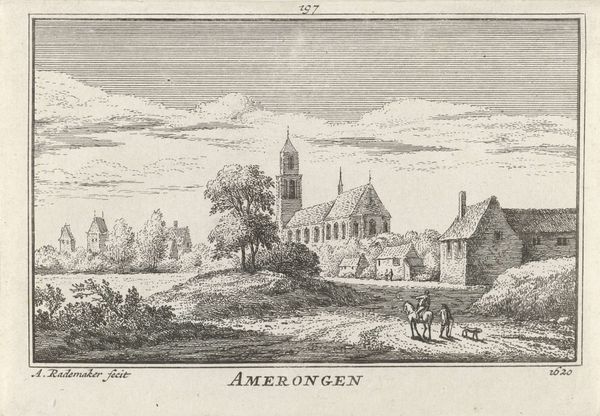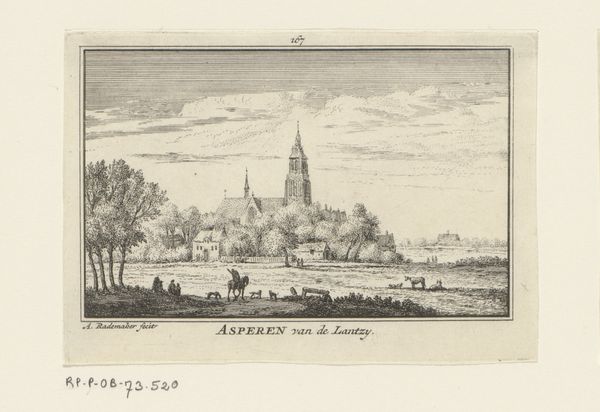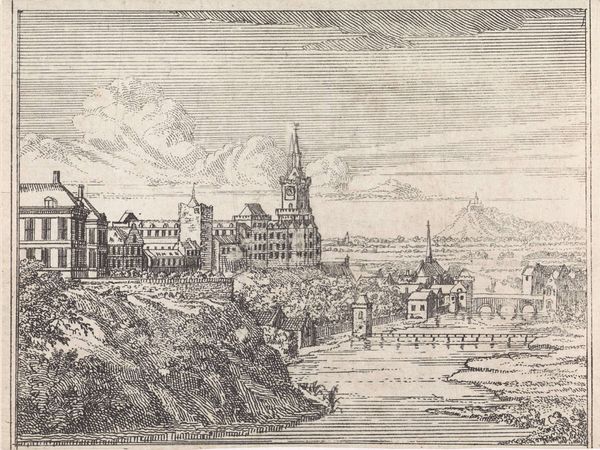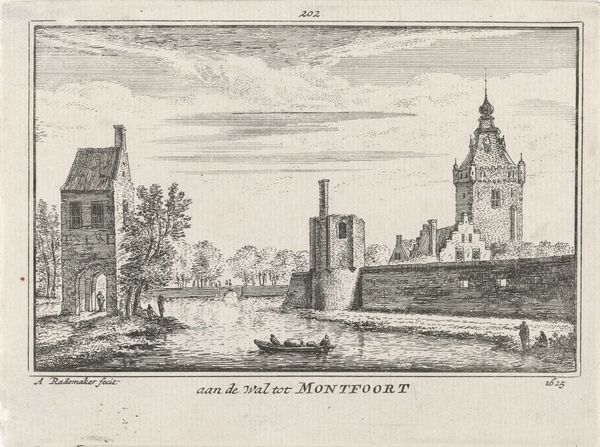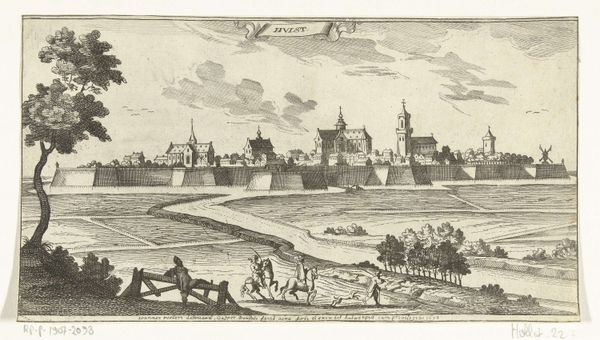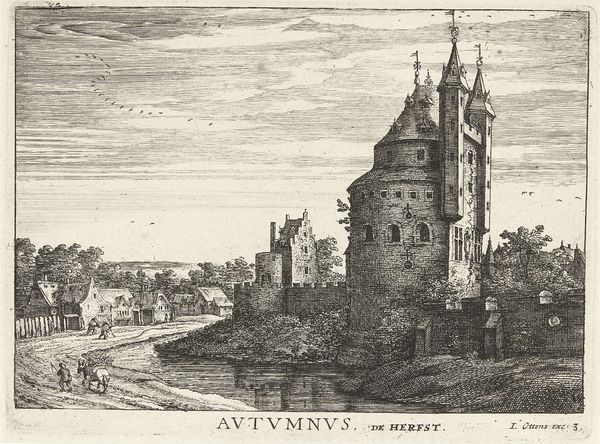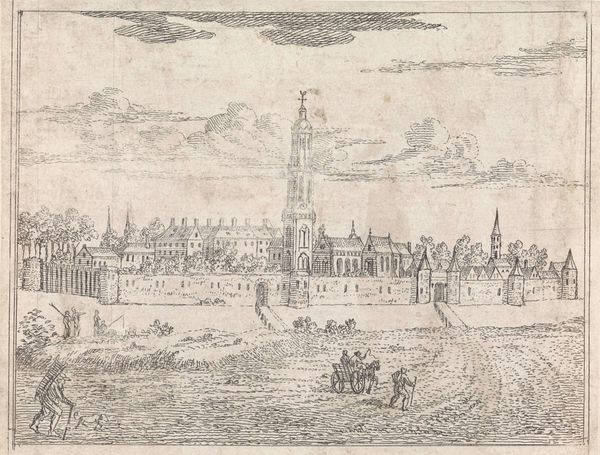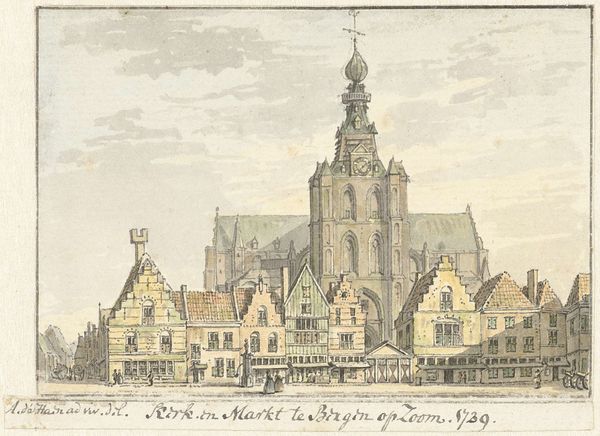
print, engraving
#
dutch-golden-age
# print
#
landscape
#
cityscape
#
engraving
#
realism
Dimensions: height 80 mm, width 115 mm
Copyright: Rijks Museum: Open Domain
Curator: Looking at this piece, it evokes such a sense of serene observation. Almost like spying on a time long gone, what's your take on this cityscape? Editor: This is a print titled "Gezicht op Arnhem", made between 1727 and 1733 by Abraham Rademaker, currently housed in the Rijksmuseum. As an engraving, we see Rademaker deployed ink and strategic labor, creating an accessible form of image circulation within Dutch society. The etching served to democratize artistic vision, producing an ethos around art consumption. Curator: Democratizing the visual alright. It feels… grounded, earthy almost, despite being a print. Maybe the perspective – a low vantage point, eye-level with the fields - does the trick? I'm getting this odd rural vibe overlaid onto the urban architecture. Editor: Observe how the material components, like the copper plate and etching tools, contributed significantly to Rademaker’s labor. This engraving process allows him to efficiently reproduce multiple images for consumption, fitting into the dynamic cultural commerce of the Dutch Golden Age. The social context matters here too. Prints like these fed a burgeoning middle class craving imagery and knowledge of their expanding world. Curator: Agreed. What I love, actually, are the almost impressionistic clouds looming. See how they both dominate and give context? He manages to capture weight with such light material! How much would you guess factors like weather and seasonal change influence his depiction here? Editor: He had complete control, through artistic direction, of seasonal elements. But the material’s constraint directs a kind of production value - its worth is decided, literally. Considering the landscape and style, Rademaker places emphasis on realist style that allows viewers insight and the city’s geographical and societal value during its golden years. It presents not just artistry but craftsmanship intertwined deeply with socio-economic circumstances. Curator: Beautifully articulated! A snapshot, mass-produced, and somehow still carrying the aura of a lived experience. I like thinking of viewers of that time buying and experiencing Rademaker’s prints of places known to them or, perhaps, totally new ones. A very modern form of art consumption. Editor: Indeed, the convergence of art and industry during that time makes "Gezicht op Arnhem" not merely a print, but an artifact echoing a society's intricate structures.
Comments
No comments
Be the first to comment and join the conversation on the ultimate creative platform.
